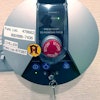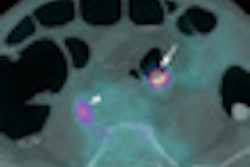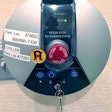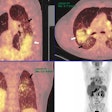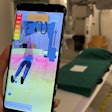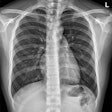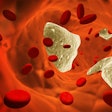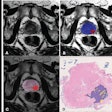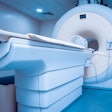
NEW YORK (Reuters Health), May 28 - In patients with elevated cardiac risk but without cardiac symptoms, coronary CT angiography (CCTA) can reliably predict cardiac events and assess cardiovascular risk, German researchers reported online April 30 in the American Journal of Cardiology.
The test found a high prevalence of coronary abnormalities in the study's 451 participants, but the researchers also emphasize that during the two-year follow-up, the absolute risk of cardiac death or nonfatal myocardial infarction was "extremely low."
Dr. Martin Hadamitzky of the German Heart Center at the Technical University Munich report on evaluations performed with three different systems: a 16-slice system from December 2003 to September 2004, a 64-slice single-source system from October 2004 to September 2006, and a 64-slice dual-source system from October 2006 to October 2007 (all from Siemens Healthcare).
The estimated radiation dose from the first 64-slice CCTA (the type most often used in this study) was about 10 mSv, while the newest studies have shown progress in reducing the dose to below 1 mSv, Dr. Hadamitzky told Reuters Health by e-mail.
By comparison, the worldwide average annual dose of natural radiation is about 2.4 mSv, according to a report from the United Nations Scientific Committee on the Effects of Atomic Radiation (www.unscear.org/docs/reports/gareport.pdf), although background radiation varies widely from place to place.
Given this improvement in CCTA technique, Dr. Hadamitzky said, the results of the current study "can serve as a basis for considering CCTA as an additional modality for assessing coronary risk in asymptomatic patients."
Almost all of the patients in the study had the test done because they had elevated cardiovascular risk profiles and their physicians wanted to rule out coronary artery disease (CAD).
CCTA found a high prevalence of coronary abnormalities among the patients: 83% had non-normal coronary arteries, 23% had obstructive CAD, and 10% had lesions suitable for percutaneous coronary intervention.
Nonetheless, the rate of cardiac events during the median follow-up of 27.5 months was low. No myocardial infarctions or cardiac-related deaths occurred. Two patients were hospitalized for unstable angina pectoris, and eight patients with obstructive CAD had percutaneous coronary intervention because of stable angina pectoris.
Detection of obstructive CAD allowed the coronary risk to be reclassified in more than half of the study subjects: 217 were reclassified from high or intermediate to low risk, and 23 were reclassified from low to intermediate risk.
By Scott Baltic
http://www.ajconline.org/article/S0002-9149(10)00513-8/abstract
Am J Cardiol 2010.
Last Updated: 2010-05-27 19:52:40 -0400 (Reuters Health)
Related Reading
CT coronary angiography most helpful for intermediate-risk patients, May 18, 2010
Copyright © 2010 Reuters Limited. All rights reserved. Republication or redistribution of Reuters content, including by framing or similar means, is expressly prohibited without the prior written consent of Reuters. Reuters shall not be liable for any errors or delays in the content, or for any actions taken in reliance thereon. Reuters and the Reuters sphere logo are registered trademarks and trademarks of the Reuters group of companies around the world.
